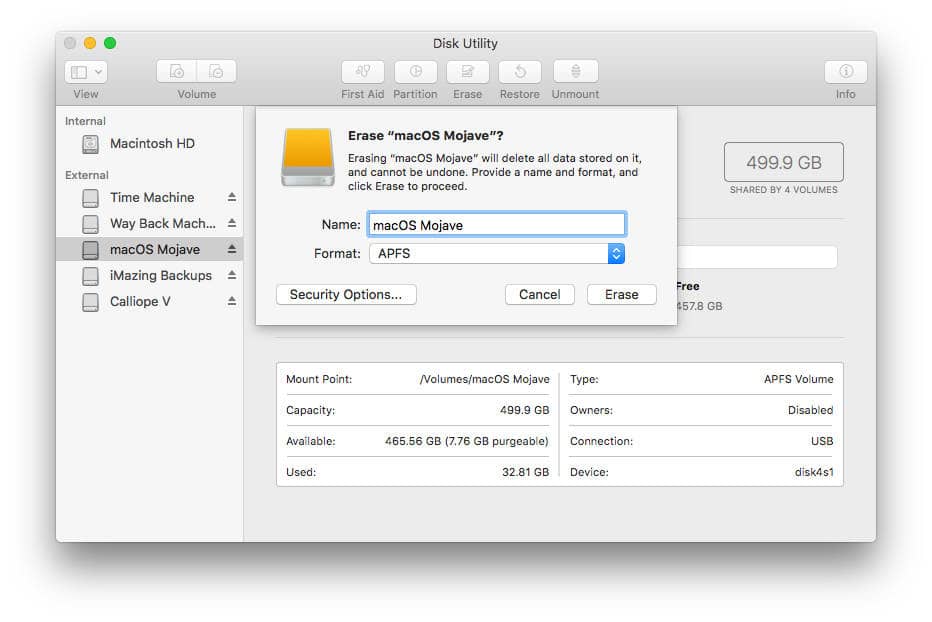
If you add phones to the mix, you'll have to use FAT32 or exFAT. As long as you don't hit the file size limit of FAT32, they're pretty much the same. However, I would not use a drive formatted with FAT32 or exFAT for anything that isn't transient or unimportant. I recently had problems with both file systems on camera SD cards that required reformatting to fix. I don't even want to think about having the same issues with a 2TB hard drive. While you can fix minor problems on all three file systems with fsck, you will have to use MS Windows to fix anything major. If the Security Options button is not available, Disk Utility cannot perform a secure erase on the storage device.Consider splitting the drive into two partitions. A large NTFS partition for data that is more stable, as well as read/write on Windows and Linux. A small exFAT partition to copy files from Mac OS.įAT32. Read/write on all three systems. Not journaled. File size < 4G.ĮxFAT. Read/write on all three systems. Not journaled. Secure erase options are available only for some types of storage devices. (Optional) If available, click Security Options, use the slider to choose how many times to write over the erased data, then click OK. If the Scheme pop-up menu isn’t available, make sure you selected the storage device you want to erase - it’s at the top of the hierarchy.Ĭlick the Format pop-up menu, then choose a file system format. Ĭlick the Scheme pop-up menu, then choose GUID Partition Map. In the sidebar, select the storage device you want to erase, then click the Erase button.


If you want to erase any other type of storage device: Double-click Disk Utility in the /Applications/Utilities folder. Note: If you want to get your Mac ready to trade in, sell or give away, and your computer is a Mac with Apple silicon or an Intel-based Mac with an Apple T2 Security Chip, use Erase Assistant.


 0 kommentar(er)
0 kommentar(er)
